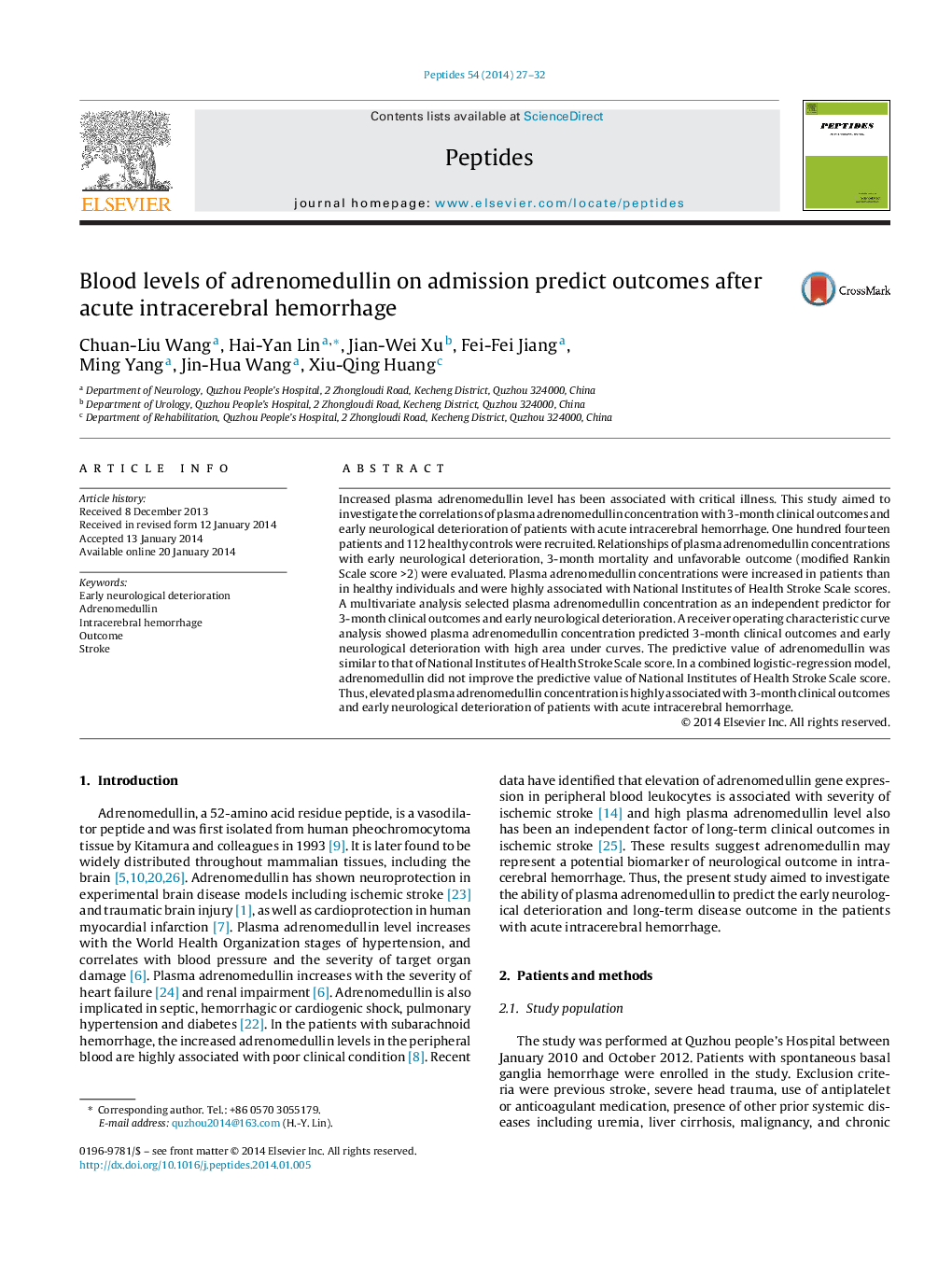| Article ID | Journal | Published Year | Pages | File Type |
|---|---|---|---|---|
| 2006115 | Peptides | 2014 | 6 Pages |
•Adrenomedullin was released after acute intracerebral hemorrhage.•Adrenomedullin was an independent predictor for long-term outcome.•Adrenomedullin has high predictive value for long-term outcome.
Increased plasma adrenomedullin level has been associated with critical illness. This study aimed to investigate the correlations of plasma adrenomedullin concentration with 3-month clinical outcomes and early neurological deterioration of patients with acute intracerebral hemorrhage. One hundred fourteen patients and 112 healthy controls were recruited. Relationships of plasma adrenomedullin concentrations with early neurological deterioration, 3-month mortality and unfavorable outcome (modified Rankin Scale score >2) were evaluated. Plasma adrenomedullin concentrations were increased in patients than in healthy individuals and were highly associated with National Institutes of Health Stroke Scale scores. A multivariate analysis selected plasma adrenomedullin concentration as an independent predictor for 3-month clinical outcomes and early neurological deterioration. A receiver operating characteristic curve analysis showed plasma adrenomedullin concentration predicted 3-month clinical outcomes and early neurological deterioration with high area under curves. The predictive value of adrenomedullin was similar to that of National Institutes of Health Stroke Scale score. In a combined logistic-regression model, adrenomedullin did not improve the predictive value of National Institutes of Health Stroke Scale score. Thus, elevated plasma adrenomedullin concentration is highly associated with 3-month clinical outcomes and early neurological deterioration of patients with acute intracerebral hemorrhage.
